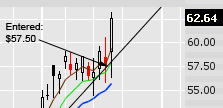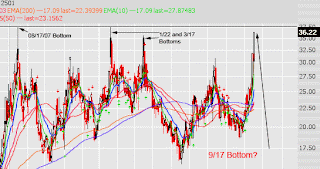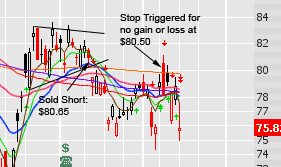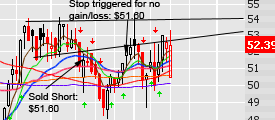So, let’s get back to price regression. Monday’s sell off was likely a capitulation-type event. We hesitate to call it “the capitulation” that ends the bear market because there is just not evidence for that at this time. Nevertheless, the washout on Monday took prices down to extreme levels in relation to the 50-week average and the lower weekly B-Band on the SPY. We saw a lot of these types of wash out events during the last bear market and each and every one of them led to a regression back to the mean (50-week average) which shortly followed. We seriously doubt that this time will be different.
What does this mean for traders? For starters it means that it’s too late to short anything on longer than a day trading basis; at least for the near term. It also means that over the next few weeks we are likely to see prices regress back toward the 50-week average, which as you can see from the table below gives us a lot of near term upside potential.
With that in mind we would offer a warning. This does not mean that it’s safe to go out and start buying beat down stocks. Remember, we are still in a bear market and as such surprises can and probably will occur in the direction of the longer term trend, which is down.
Rather, in our opinion, it is better to focus on those stocks that both held up well during the latest slide and that are showing buying interest at these levels. This rules out buying stocks at 52-week lows for example; they may bounce hard, but then again, they might surprise lower as well.
To get a list of stocks that both held up well during the slide and that are showing institutional buying interest, just provide your name and email in the form above.
Moreover, don’t look for an easy ride back up. There is still a lot of confusion out there. The market takes time to put in a bottom, even a near term bottom. It would not be out of the question that prices retest recent lows and it wouldn’t be impossible that they might even take out those lows before a real rally gets under way.
This is certainly no time to just throw caution to the wind and buy a falling knife. Be very choosy and trade only those stocks that offer the least amount of risk in this environment. High risk might offer high reward but it also offers the chance to lose big. Set your sites on consistent gains over time by always staying focused on risk management and reap the rewards. Anything less is gambling and we all know the long term results of that.
















